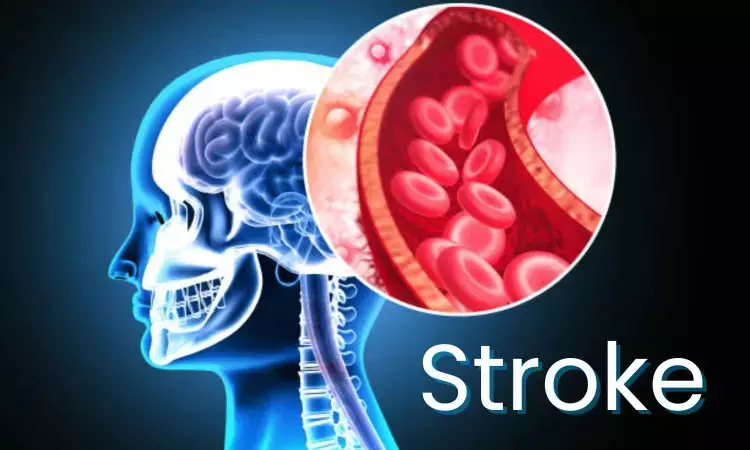- Home
- Medical news & Guidelines
- Anesthesiology
- Cardiology and CTVS
- Critical Care
- Dentistry
- Dermatology
- Diabetes and Endocrinology
- ENT
- Gastroenterology
- Medicine
- Nephrology
- Neurology
- Obstretics-Gynaecology
- Oncology
- Ophthalmology
- Orthopaedics
- Pediatrics-Neonatology
- Psychiatry
- Pulmonology
- Radiology
- Surgery
- Urology
- Laboratory Medicine
- Diet
- Nursing
- Paramedical
- Physiotherapy
- Health news
- Fact Check
- Bone Health Fact Check
- Brain Health Fact Check
- Cancer Related Fact Check
- Child Care Fact Check
- Dental and oral health fact check
- Diabetes and metabolic health fact check
- Diet and Nutrition Fact Check
- Eye and ENT Care Fact Check
- Fitness fact check
- Gut health fact check
- Heart health fact check
- Kidney health fact check
- Medical education fact check
- Men's health fact check
- Respiratory fact check
- Skin and hair care fact check
- Vaccine and Immunization fact check
- Women's health fact check
- AYUSH
- State News
- Andaman and Nicobar Islands
- Andhra Pradesh
- Arunachal Pradesh
- Assam
- Bihar
- Chandigarh
- Chattisgarh
- Dadra and Nagar Haveli
- Daman and Diu
- Delhi
- Goa
- Gujarat
- Haryana
- Himachal Pradesh
- Jammu & Kashmir
- Jharkhand
- Karnataka
- Kerala
- Ladakh
- Lakshadweep
- Madhya Pradesh
- Maharashtra
- Manipur
- Meghalaya
- Mizoram
- Nagaland
- Odisha
- Puducherry
- Punjab
- Rajasthan
- Sikkim
- Tamil Nadu
- Telangana
- Tripura
- Uttar Pradesh
- Uttrakhand
- West Bengal
- Medical Education
- Industry
High HbA1c Linked to Vascular Dysfunction in Lacunar Stroke, suggests research

A new study published in the journal of Physiological Measurement found elevated HbA1c to be associated with greater vascular stiffness and impaired cerebral autoregulation among patients with microangiopathic lacunar stroke. This suggests a mechanistic link between chronic hyperglycemia and cerebral infarction.
The study focused on 94 consecutive patients (27 women and 67 men) with a median age of 72.5 years who had experienced isolated acute microangiopathic lacunar infarctions. By carefully selecting this group, this study minimized the influence of infarct size on dynamic cerebral autoregulation (dCA), which is the ability of brain to maintain stable blood flow despite changes in blood pressure.
To assess vascular performance, this research measured 2 key dCA parameters: phase (reflecting the timing of blood flow adjustments) and gain (indicating how well vessels buffer blood pressure changes, with higher gain implying stiffer, less compliant vessels). These were derived using transfer function analysis of spontaneous oscillations in blood pressure and cerebral blood flow velocity in the middle cerebral arteries.
The patients were also categorized by HbA1c levels as normal (< 5.7%, or <39 mmol/mol), prediabetic (5.7–6.4%, or 39–46 mmol/mol) and diabetic (≥ 6.5%, or >46 mmol/mol). Magnetic resonance imaging (MRI) was performed to grade small vessel disease severity using the Fazekas scale, while routine clinical parameters were recorded.
The findings revealed neither phase nor gain significantly varied across Fazekas grading groups, suggesting that the overall burden of visible small vessel disease on MRI did not explain dCA changes.
Phase remained stable across groups, but gain rose progressively from normal HbA1c patients to those with diabetes, especially in very low frequency oscillations (0.02–0.07 Hz, p=0.02). A similar, though less statistically robust, trend was observed in the low-frequency range (0.07–0.20 Hz, p=0.07). Also, this association was not driven by differences in systemic blood pressure or carbon dioxide levels, pointing instead to an intrinsic vascular alteration linked with glucose regulation.
This study interpret increased gain as a marker of vascular stiffness which in turn suggests impaired cerebral autoregulation. Taken together, these results provide mechanistic evidence connecting chronic hyperglycemia, vascular dysfunction, and microangiopathic cerebral infarction.
Overall the study reinforces the importance of long-term glycemic control. Elevated HbA1c not only signals diabetes risk but may also serve as a red flag for hidden vascular stiffness in the brain, that could predispose patients to recurrent small-vessel strokes.
Source:
Lakatos, L.-B., Müller, M., Österreich, M., von Hessling, A., Karwacki, G. M., & Bolognese, M. (2025). Chronic hyperglycaemia is associated with vascular gain impairment in microangiopathic lacunar stroke. Physiological Measurement. https://doi.org/10.1088/1361-6579/ae0675
Neuroscience Masters graduate
Jacinthlyn Sylvia, a Neuroscience Master's graduate from Chennai has worked extensively in deciphering the neurobiology of cognition and motor control in aging. She also has spread-out exposure to Neurosurgery from her Bachelor’s. She is currently involved in active Neuro-Oncology research. She is an upcoming neuroscientist with a fiery passion for writing. Her news cover at Medical Dialogues feature recent discoveries and updates from the healthcare and biomedical research fields. She can be reached at editorial@medicaldialogues.in
Dr Kamal Kant Kohli-MBBS, DTCD- a chest specialist with more than 30 years of practice and a flair for writing clinical articles, Dr Kamal Kant Kohli joined Medical Dialogues as a Chief Editor of Medical News. Besides writing articles, as an editor, he proofreads and verifies all the medical content published on Medical Dialogues including those coming from journals, studies,medical conferences,guidelines etc. Email: drkohli@medicaldialogues.in. Contact no. 011-43720751


